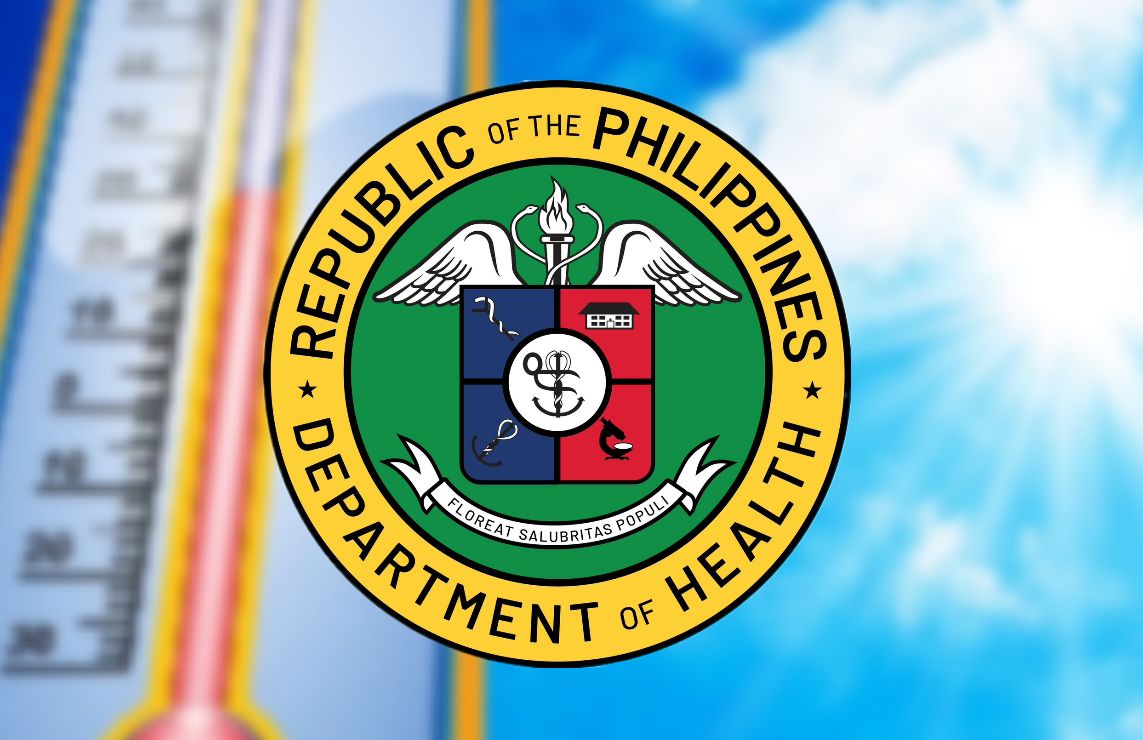DOH advises public to take preventive measures as heat index soars
By Jel Santos

As the heat index climbs to extreme levels, the Department of Health (DOH) has urged the public to take necessary measures to prevent heat-related illnesses.
Recently, the Philippine Atmospheric, Geophysical and Astronomical Services Administration (PAGASA) announced that the heat index in Metro Manila could reach 46 degrees Celsius on March 3 and 4, with a “danger” heat index also forecasted in Pampanga, Nueva Ecija, Bataan, and Olongapo City, as temperatures between 33 to 41 degrees Celsius are classified under “extreme caution” while those ranging from 42 to 51 degrees Celsius fall under the “danger” category.
According to the health department, exposure to these temperatures may cause heat cramps and heat exhaustion, which can manifest through fatigue, dizziness, headaches, nausea, and vomiting.
“Ang matagal na pagkakalantad sa init ay nagpapataas ng posibilidad ng heat stroke, isang seryosong kondisyon na may pagkawala ng malay, pagkalito, o kaya ay mga seizure/kombulsyon, na maaaring nakamamatay kung hindi ginagamot (Prolonged exposure to heat increases the risk of heat stroke, a serious condition that can cause loss of consciousness, confusion, or seizures, which may be fatal if left untreated),” the DOH said in an advisory.
Should any of such symptoms appear, the agency advised the public to administer first aid immediately.
“Ilipat ang tao sa isang malilim at malamig na lugar, at ayusin ang bentilasyon. Tanggalin ang panlabas na damit ng tao. Maglagay ng malamig na compress, ice pack, malamig na tubig, o malamig na basang tela sa balat, lalo na sa bandang ulo, mukha, leeg, kilikili, pulso, bukung-bukong, at singit (Move the person to a shaded and cool area and improve ventilation. Remove any outer clothing. Apply a cold compress, ice pack, cold water, or a damp cool cloth to the skin, especially on the head, face, neck, armpits, wrists, ankles, and groin),” the health department said.
“Kung ang pasyente ay may kamalayan, hikayatin ang madalas ngunit mabagal na pagsipsip ng malamig na tubig. Makipag-ugnayan sa emergency services, o dalhin kaagad ang tao sa ospital (If the patient is conscious, encourage them to take frequent but slow sips of cold water. Contact emergency services or immediately transport the person to the nearest hospital),” it added.
The DOH advised the public to stay updated on PAGASA forecasts and prevent heat-related illnesses by hydrating frequently, avoiding caffeinated and alcoholic drinks, reducing exposure to extreme heat, and wearing protective clothing and sunblock.
Health Secretary Ted Herbosa underscored the importance of monitoring the heat index and taking precautions to prevent serious health risks.
“Kaya nating iwasan ang mga heat illnesses o sakit ng init. Alamin mula sa PAGASA ang heat index. Pagibayuhin ang pag-iingat, lalo na kapag ang heat index ay 33 Celsius na (We can prevent heat illnesses. Stay informed about the heat index from PAGASA. Take extra precautions, especially when the heat index reaches 33 degrees Celsius),” he said.
“Kapag umabot o lumampas na ng 42 Celsius ang heat index, ‘danger’ na yan—dalasan ang pag-inom ng malinis na tubig, at umiwas sa araw mula 10 a.m. hanggang 4 p.m. (When the heat index reaches or exceeds 42 degrees Celsius, it is already in the ‘danger’ level—drink clean water frequently and avoid sun exposure from 10 a.m. to 4 p.m.),” he added.